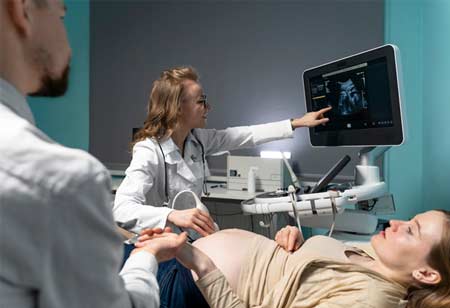Modern Orthopedic Centers Transform Surgery and Rehabilitation Experience
Orthopedic centers are advancing with precise diagnostics, minimally invasive surgeries, and personalized rehabilitation, leading to quicker recovery and better patient outcomes.

By
Medical Care Review | Wednesday, July 30, 2025
Stay on top of your health and well-being with exclusive feature stories on the top medical clinics and treatment centers, expert insights and the latest news delivered straight to your inbox. Subscribe today.
Fremont, CA: Orthopedic centers are evolving rapidly, driven by the demand for faster recovery, minimally invasive techniques, and personalized treatment plans. These advancements redefine the patient experience, offering improved outcomes, shorter hospital stays, and better long-term mobility. Specialists now rely on innovative tools and technology to diagnose conditions accurately, perform precise interventions, and support full-spectrum rehabilitation. This evolution is making orthopedic care more efficient, effective, and patient-centered.
Innovative Procedures and Diagnostic Technology
Modern orthopedic centers are embracing cutting-edge diagnostic tools to improve accuracy and speed in detecting musculoskeletal issues. Cutting-edge imaging techniques, such as 3D scans and motion analysis systems, allow specialists to precisely pinpoint joint, bone, and tissue problems. This helps doctors tailor treatment plans that align closely with a patient’s condition, avoiding unnecessary procedures and reducing trial-and-error approaches.
Minimally invasive surgical techniques have transformed the effectiveness of orthopedic surgeries. Surgeons use smaller incisions, guided tools, and real-time imaging to perform complex operations with less trauma to surrounding tissues. These approaches reduce blood loss, minimize scarring, and shorten recovery times. In joint replacements and spine surgeries, robotic-assisted systems enhance precision, reducing complications and extending the life of implants.
Orthopedic centers also adopt biologic therapies, including platelet-rich plasma and stem cell injections. These techniques stimulate the body’s natural healing processes, offering non-surgical options for patients dealing with chronic pain or early-stage degeneration. Combined with physical therapy, these treatments enhance recovery and often delay the need for invasive surgery.
Patient-Centered Recovery and Rehabilitation
Rehabilitation is no longer a one-size-fits-all process. Orthopedic centers now provide tailored recovery programs for individual goals, activity levels, and timelines. Digital platforms track patient progress in real time, allowing therapists to adjust exercises and intensity based on measurable improvements. This personalized approach accelerates healing and keeps patients motivated and engaged throughout their recovery.
Wearable technology is becoming increasingly significant in monitoring post-operative recovery. Devices track movement, range of motion, and adherence to rehabilitation protocols, helping clinicians intervene early if issues arise. This constant feedback loop ensures patients stay on course and consistently meet functional milestones.
Patient education has also improved, with orthopedic teams offering detailed guidance on self-care, injury prevention, and long-term joint health. By promoting an active role in recovery, patients gain confidence and better outcomes, reducing the risk of repeat injuries or complications.







